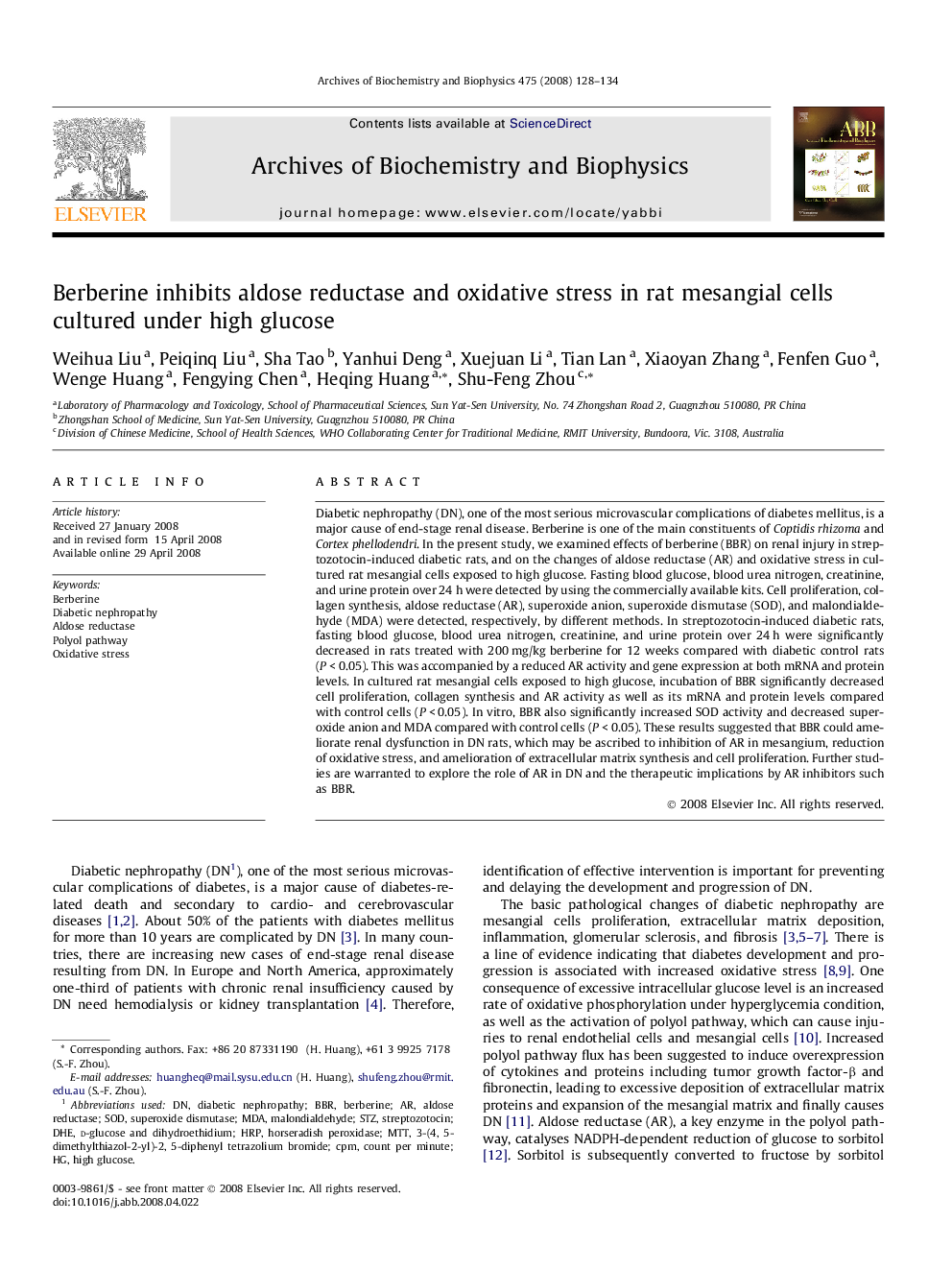| کد مقاله | کد نشریه | سال انتشار | مقاله انگلیسی | نسخه تمام متن |
|---|---|---|---|---|
| 1926719 | 1536475 | 2008 | 7 صفحه PDF | دانلود رایگان |

Diabetic nephropathy (DN), one of the most serious microvascular complications of diabetes mellitus, is a major cause of end-stage renal disease. Berberine is one of the main constituents of Coptidis rhizoma and Cortex phellodendri. In the present study, we examined effects of berberine (BBR) on renal injury in streptozotocin-induced diabetic rats, and on the changes of aldose reductase (AR) and oxidative stress in cultured rat mesangial cells exposed to high glucose. Fasting blood glucose, blood urea nitrogen, creatinine, and urine protein over 24 h were detected by using the commercially available kits. Cell proliferation, collagen synthesis, aldose reductase (AR), superoxide anion, superoxide dismutase (SOD), and malondialdehyde (MDA) were detected, respectively, by different methods. In streptozotocin-induced diabetic rats, fasting blood glucose, blood urea nitrogen, creatinine, and urine protein over 24 h were significantly decreased in rats treated with 200 mg/kg berberine for 12 weeks compared with diabetic control rats (P < 0.05). This was accompanied by a reduced AR activity and gene expression at both mRNA and protein levels. In cultured rat mesangial cells exposed to high glucose, incubation of BBR significantly decreased cell proliferation, collagen synthesis and AR activity as well as its mRNA and protein levels compared with control cells (P < 0.05). In vitro, BBR also significantly increased SOD activity and decreased superoxide anion and MDA compared with control cells (P < 0.05). These results suggested that BBR could ameliorate renal dysfunction in DN rats, which may be ascribed to inhibition of AR in mesangium, reduction of oxidative stress, and amelioration of extracellular matrix synthesis and cell proliferation. Further studies are warranted to explore the role of AR in DN and the therapeutic implications by AR inhibitors such as BBR.
Journal: Archives of Biochemistry and Biophysics - Volume 475, Issue 2, 15 July 2008, Pages 128–134